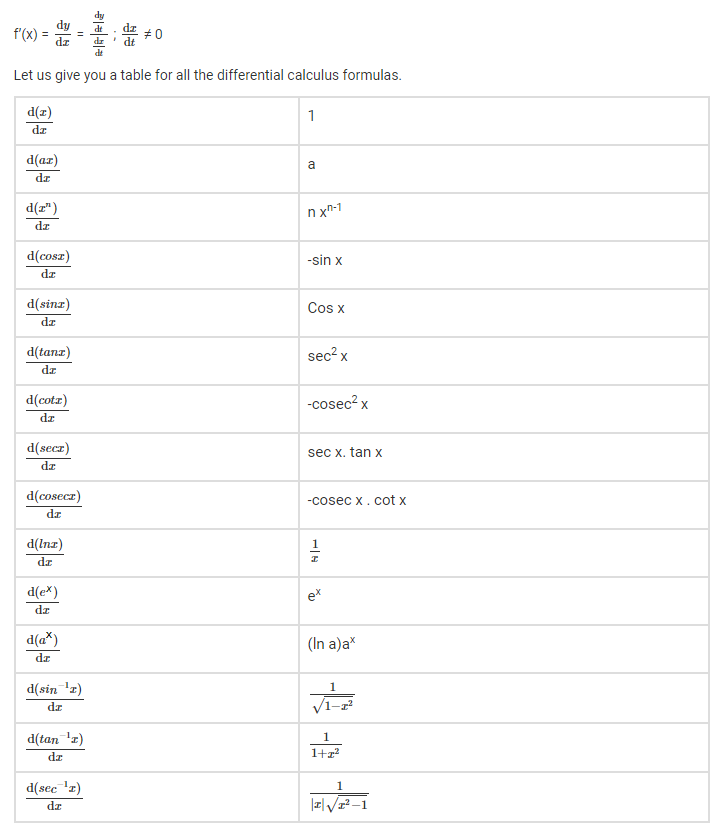What is Calculus?
Calculus is a branch of mathematics that explores the concept of change and motion. It consists of two primary branches: differential calculus and integral calculus. Differential calculus focuses on studying rates of change and slopes of curves, while integral calculus deals with the accumulation of quantities and areas under curves. Together, these two branches provide a powerful toolkit for solving problems related to motion, growth, and change in various fields, including physics, engineering, economics, and more.
What is Differential Calculus?
Differential calculus, often simply referred to as "calculus," is the branch of mathematics that delves into the concept of instantaneous change. In other words, it helps us understand how things change at a specific point in time or space. Differential calculus is primarily concerned with functions, which are mathematical relationships that describe how one quantity depends on another. It allows us to answer questions like "How fast is an object moving at a particular moment?" or "What is the rate of change of a function at a given point?"
Terms Related to Differential Calculus
Before we dive into the nitty-gritty of differential calculus, let's familiarize ourselves with some fundamental terms:
- Function: A function is a mathematical relationship that assigns a unique output (dependent variable) to each input (independent variable). It forms the basis of all calculus operations.
- Independent Variable: This is the input variable in a function, representing the quantity you can control or change.
- Dependent Variable: The dependent variable is the output of a function, determined by the independent variable.
- Domain and Range: The domain of a function is the set of all possible input values, while the range is the set of all possible output values.
- Limits: Limits are used to describe the behavior of a function as it approaches a specific point or value. They are essential in defining derivatives.
- Derivatives: Derivatives are the core concept of differential calculus. They represent the rate of change of a function at a given point.
Basics of Differential Calculus
At its core, differential calculus is all about understanding how a function behaves at an infinitesimal level.
Here are the key ideas that form the foundation of differential calculus:
- Slope of a Tangent Line: One of the primary goals of differential calculus is to find the slope of the tangent line to a curve at a specific point. This slope represents the instantaneous rate of change of the function at that point.
- Rate of Change: The derivative of a function provides the rate at which the dependent variable changes concerning the independent variable. This rate can be positive, negative, or zero.
- Differentiability: A function is said to be differentiable at a point if it has a derivative at that point. Not all functions are differentiable everywhere.
Differential Calculus Rules
Differential calculus provides a set of rules and techniques for finding derivatives efficiently.
These rules include:
- Power Rule: Used for finding derivatives of functions of the form f(x) = x^n, where n is a constant.
- Sum and Difference Rules: These rules allow us to find the derivative of a sum or difference of functions.
- Product Rule: Used when dealing with the derivative of the product of two functions.
- Quotient Rule: Applied when finding the derivative of the quotient of two functions.
- Chain Rule: Essential for finding derivatives of composite functions, where one function is nested inside another.
- Trigonometric and Exponential Rules: Special rules apply to trigonometric and exponential functions, such as sin(x), cos(x), e^x, etc.

Differential Calculus Formulas
Here are some fundamental differential calculus formulas that you'll frequently encounter:
- Derivative of a Constant: If f(x) = c (where c is a constant), then f'(x) = 0.
- Derivative of x^n: If f(x) = x^n, then f'(x) = nx^(n-1).
- Derivative of e^x: The derivative of e^x is e^x.
- Derivative of ln(x): The derivative of ln(x) is 1/x.
- Derivative of sin(x): The derivative of sin(x) is cos(x).
- Derivative of cos(x): The derivative of cos(x) is -sin(x).

Applications in Real Life
Differential calculus finds applications in various fields, making it an indispensable tool in modern science and engineering. Here are a few areas where differential calculus plays a crucial role:
- Physics: Calculating the velocity and acceleration of objects in motion, modeling physical phenomena, and solving problems related to forces and energy.
- Engineering: Designing and optimizing structures, analyzing circuits, and predicting the behavior of dynamic systems.
- Economics: Studying supply and demand curves, maximizing profit, and understanding the dynamics of financial markets.
- Biology: Analyzing population growth, modeling the spread of diseases, and studying enzyme kinetics.
- Computer Science: Developing algorithms, optimizing code, and solving problems in artificial intelligence and machine learning.
In conclusion, differential calculus is a powerful mathematical tool that allows us to understand and describe how things change. It forms the foundation for solving a wide range of problems in science, engineering, and many other fields, making it an essential concept for anyone seeking to explore the intricacies of the natural world and beyond. By mastering the rules and formulas of differential calculus, you'll be equipped with a valuable skill set for analyzing and solving complex real-world problems.

Here are some frequently asked questions (FAQs) about differential calculus:
What is differential calculus, and why is it important?
Differential calculus is a branch of mathematics that deals with the study of rates of change and slopes of curves. It's essential because it provides a framework for understanding how quantities change over time or space, making it invaluable in fields like physics, engineering, and economics.
What are the basic concepts in differential calculus?
The basic concepts include functions, independent and dependent variables, domains and ranges, limits, and derivatives. Functions describe relationships between variables, while derivatives represent the rate of change of a function at a specific point.
How do I find the derivative of a function?
You can find the derivative of a function using various rules and formulas, such as the power rule, sum and difference rules, product rule, quotient rule, chain rule, and specific rules for trigonometric and exponential functions.
What is the significance of limits in differential calculus?
Limits are crucial because they describe how a function behaves as it approaches a specific point or value. They are fundamental in defining derivatives and understanding the behavior of functions near critical points.
Can you provide real-world examples of differential calculus applications?
Absolutely! Differential calculus is used to analyze motion (e.g., calculating velocity and acceleration), optimize engineering designs, model economic phenomena (e.g., supply and demand curves), understand population dynamics in biology, and solve complex problems in computer science and machine learning.






